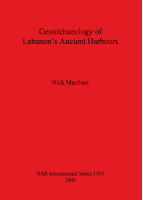Description
Beirut, Sidon and Tyre have been occupied by human societies since the third millennium BC. The sites grew up around easily defendable promontories, for Beirut and Sidon, and an offshore island, as in the case of Tyre. All three possessed natural low energy basins that could be exploited as anchorage havens with little or no need for human artificialisation. In spite of their former maritime glories, however, the evolution of these three important Phoenician citystates has remained largely enigmatic. Chapter 1: Although innumerable studies have addressed the various aspects of ancient harbour geoarchaeology, there is no single monograph that treats the subject in its entirety. The aim of this first chapter is therefore to comprehensively review the present literature, and set ancient harbour geoscience within the wider context of Mediterranean coastal archaeology Chapter 2: The most pronounced coastal changes of all three sites have been observed at Tyre and this chapter analyses the role of various natural and anthropogenic forcings to reconstruct the Holocene accretion and progradation of Tyre's 'tombolo', a peculiar sand isthmus linking the former offshore bastion to the continent. Chapter 3: The exact location of Tyre's ancient anchorages has been a source of archaeological speculation since the sixteenth century and this chapter reviews this earlier literature before moving on to precisely relocate the ancient northern harbour, the city's principal transport hub during antiquity, and its phases of evolution. Chapter 4: At Sidon, coastal stratigraphy has been used to reconstruct where, when and how the city's ancient anchorages evolved. During the Bronze Age, the city's southern bay, or 'Crique Ronde'. Chapter 5: At Beirut, redevelopment of the central business district during the 1990s exposed great tracts of the city's archaeology. Often dubbed as the 'largest archaeological dig in the world' the author and his team were called upon to link the historical data with the coastal stratigraphy and reconstruct the ancient harbour's history. Chapter 6 draws together the data from all three sites to propose a general model of Phoenician harbour evolution since the Bronze Age.
REVIEW
‘…a fine publication which shows that the use of geoarchaeology can be essential for a further understanding of the maritime history of the Mediterranean and beyond.’ J.G. de Boer, Ancient West and East, volume 14, 2015
‘This book should be one of the basic publications in any library of harbour/geomorphological research. The ‘Introduction’ is extensive and methodical. The history of harbour archaeology is well presented.’ Yaacov Kahanov, International Journal of Nautical Archaeology, 43.1.2014











